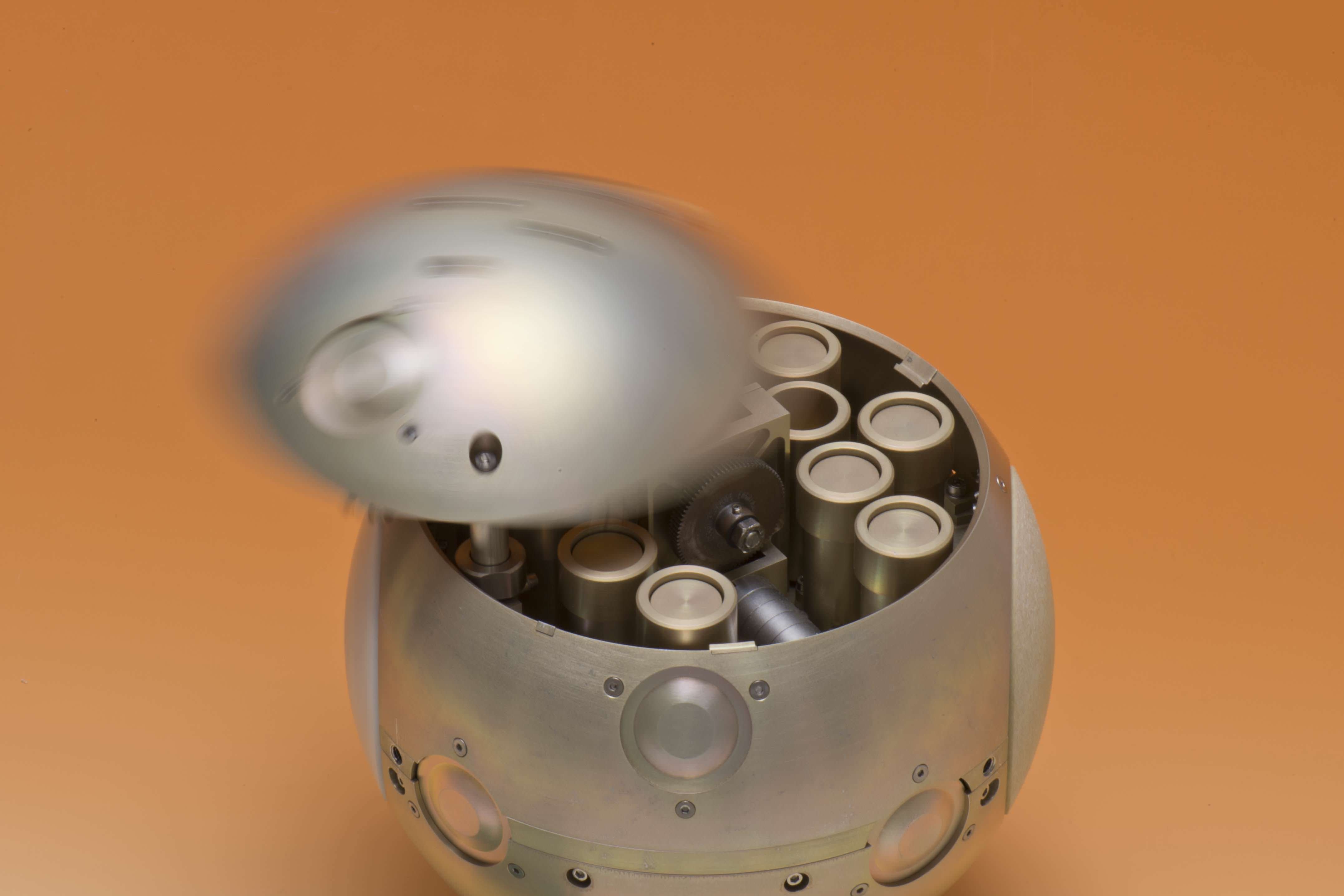Could this be as surprising as Forrest Gump's box of chocolates? What you're looking at here is a container that could one day contain samples of Mars. Yup, even though a "sample return" mission is still years away, the European Space Agency is already designing a container so that when the time comes, they'll be ready for the trip.
This 11-pound (five kilogram) container absolutely needs to keep whatever is inside protected and at a constant temperature of 14 Fahrenheit (-10 Celsius) as it journeys from the Martian surface to Earth, which takes several months at the least. And the journey won't be an easy one, ESA says:
"First, the sample container must be landed on Mars, along with a rover to retrieve a cache of samples carefully selected by a previous mission, according to current mission scenarios," the agency stated.
[caption id="attachment_105888" align="alignleft" width="176"]
A Mars sample return mission is still quite a ways away. Credit: European Space Agency[/caption]
"Then, once filled, it will be launched back up to Mars orbit. There it will remain for several days until a rendezvous spacecraft captures it ... Before being returned to Earth, the container will be enclosed in another larger bio-sealed vessel to ensure perfect containment of any returned martian material. This container will then be returned to Earth for a high-speed entry."
Why not use a parachute? Well, if the samples contain life it would be awkward if the parachute malfunctioned and the capsule scattered stuff all over Earth. That's why it's designed for a crash landing; it can in fact withstand forces of at least 400 times the force of gravity, tests of the capsule have revealed.
The prime contractor for this project was French company
Mecano I&D
. ESA emphasizes this is just a proof of concept so far, and that further refinements are expected. Plus, this little machine needs a ride to and from Mars. When do you think that will happen, and how?
Source:
European Space Agency
 Universe Today
Universe Today
